Do you have a question about the NOCO Genius Genius G7200 and is the answer not in the manual?
Prior to use, read and understand product safety information regarding electrical shock, explosion, or fire.
Lists the items included with the NOCO Genius G7200 Smart Charger.
Provides phone number, email, and mailing address for NOCO customer support.
Details the NOCO Genius G7200 charger's technology and compatibility with various battery types.
Advice on preparing to use the charger, including reading battery precautions and determining battery voltage.
Instructions for mounting the charger using external holes and self-drill screws.
Charger is not charging, drawing microscopic power, with an orange LED illumination.
For charging 12-volt Wet Cell, Gel Cell, Enhanced Flooded, Maintenance-Free and Calcium batteries.
For charging 12-volt batteries in cold temps below 50°F or AGM batteries.
For charging 24-volt Wet Cell, Gel Cell, Enhanced Flooded, Maintenance-Free and Calcium batteries.
For charging 24-volt batteries in cold temps below 50°F or AGM batteries.
For charging 12-volt lithium-ion batteries, including lithium iron phosphate.
For charging 12-volt advanced AGM batteries requiring higher charging voltage.
Converts to a DC power supply for powering 12VDC devices or retaining memory settings.
Battery recovery mode for repairing old, idle, damaged, stratified or sulfated batteries.
Mode for advanced AGM batteries; caution advised due to high charging voltage.
Mode for powering 12VDC devices; safety features like spark proof are disabled.
Mode for recovering batteries; caution for high charging voltage and sensitive electronics.
Steps for connecting the charger to battery terminals, emphasizing polarity and connection points.
Steps to verify connections, select charge mode, and start the charging process.
Explanation of the 25%, 50%, 75%, 100% Charge LEDs and Maintenance Green LED.
How to interpret blink sequences from Error LED and Standby LED for error conditions.
Returns to last selected mode when restarted.
Alters the charging process based on organic battery feedback.
Applies high-voltage pulse charge for low-voltage, sulfation, or lost capacity.
Protects against reverse polarity, sparks, overcharging, overcurrent, etc.
Charges two times faster than traditional battery chargers.
Adjusts for varying A/C line voltage for consistent charging.
Resistant to dirt, water, UV, impact and crush.
High-frequency energy conversion for an ultra-compact, lightweight charger.
Counteracts increased cyclic energy demands placed on batteries in micro-hybrid vehicles.
Multi-level safety barrier preventing abnormal and unsafe conditions.
Stabilizes internal battery chemistry for increased performance and longevity.
Keeps battery fully charged without overcharging, allowing indefinite connection.
Minimizes energy consumption when full power is not needed.
Charge LEDs dynamically track battery state-of-charge when load outpaces current.
Intuitive visual tool for detecting reverse polarity, low-voltage or damaged batteries.
Automatically enables charging port to charge CANBUS systems.
Internal temperature sensors adjust charge based on ambient climate.
Visual representation of the 8-step charging process: Analyze, Diagnose, Recovery, Initialize, Bulk, Absorption, Optimization, Maintenance.
Checks battery's initial condition, voltage, state-of-charge, and health before charging.
Initializes desulfation process for discharged or sulfated batteries by pulsing current.
Starts the charging process with a gentle (soft) charge.
Begins bulk charging, returning 80% of the battery's capacity.
Brings charge level to 90% with small current amounts for safe, efficient charging.
Finalizes charging, recaptures capacity, and optimizes specific gravity for performance.
Continuously monitors battery and restarts maintenance cycle if voltage drops.
Estimated time to charge batteries based on size (Ah) and depth of discharge (DOD).
Specifies the AC input voltage range and working voltage range.
Details the charger's efficiency and maximum power consumption.
Specifies the charging voltage and current outputs for 12V and 24V systems.
Details the low-voltage detection thresholds and back current drain.
Specifies the operating ambient temperature range and charger type.
Lists supported battery chemistries and capacities for 12V and 24V systems.
Details housing protection (IP65), cooling method, dimensions, and weight.
Prior to use, read and understand product safety information regarding electrical shock, explosion, or fire.
Lists the items included with the NOCO Genius G7200 Smart Charger.
Provides phone number, email, and mailing address for NOCO customer support.
Details the NOCO Genius G7200 charger's technology and compatibility with various battery types.
Advice on preparing to use the charger, including reading battery precautions and determining battery voltage.
Instructions for mounting the charger using external holes and self-drill screws.
Charger is not charging, drawing microscopic power, with an orange LED illumination.
For charging 12-volt Wet Cell, Gel Cell, Enhanced Flooded, Maintenance-Free and Calcium batteries.
For charging 12-volt batteries in cold temps below 50°F or AGM batteries.
For charging 24-volt Wet Cell, Gel Cell, Enhanced Flooded, Maintenance-Free and Calcium batteries.
For charging 24-volt batteries in cold temps below 50°F or AGM batteries.
For charging 12-volt lithium-ion batteries, including lithium iron phosphate.
For charging 12-volt advanced AGM batteries requiring higher charging voltage.
Converts to a DC power supply for powering 12VDC devices or retaining memory settings.
Battery recovery mode for repairing old, idle, damaged, stratified or sulfated batteries.
Mode for advanced AGM batteries; caution advised due to high charging voltage.
Mode for powering 12VDC devices; safety features like spark proof are disabled.
Mode for recovering batteries; caution for high charging voltage and sensitive electronics.
Steps for connecting the charger to battery terminals, emphasizing polarity and connection points.
Steps to verify connections, select charge mode, and start the charging process.
Explanation of the 25%, 50%, 75%, 100% Charge LEDs and Maintenance Green LED.
How to interpret blink sequences from Error LED and Standby LED for error conditions.
Returns to last selected mode when restarted.
Alters the charging process based on organic battery feedback.
Applies high-voltage pulse charge for low-voltage, sulfation, or lost capacity.
Protects against reverse polarity, sparks, overcharging, overcurrent, etc.
Charges two times faster than traditional battery chargers.
Adjusts for varying A/C line voltage for consistent charging.
Resistant to dirt, water, UV, impact and crush.
High-frequency energy conversion for an ultra-compact, lightweight charger.
Counteracts increased cyclic energy demands placed on batteries in micro-hybrid vehicles.
Multi-level safety barrier preventing abnormal and unsafe conditions.
Stabilizes internal battery chemistry for increased performance and longevity.
Keeps battery fully charged without overcharging, allowing indefinite connection.
Minimizes energy consumption when full power is not needed.
Charge LEDs dynamically track battery state-of-charge when load outpaces current.
Intuitive visual tool for detecting reverse polarity, low-voltage or damaged batteries.
Automatically enables charging port to charge CANBUS systems.
Internal temperature sensors adjust charge based on ambient climate.
Visual representation of the 8-step charging process: Analyze, Diagnose, Recovery, Initialize, Bulk, Absorption, Optimization, Maintenance.
Checks battery's initial condition, voltage, state-of-charge, and health before charging.
Initializes desulfation process for discharged or sulfated batteries by pulsing current.
Starts the charging process with a gentle (soft) charge.
Begins bulk charging, returning 80% of the battery's capacity.
Brings charge level to 90% with small current amounts for safe, efficient charging.
Finalizes charging, recaptures capacity, and optimizes specific gravity for performance.
Continuously monitors battery and restarts maintenance cycle if voltage drops.
Estimated time to charge batteries based on size (Ah) and depth of discharge (DOD).
Specifies the AC input voltage range and working voltage range.
Details the charger's efficiency and maximum power consumption.
Specifies the charging voltage and current outputs for 12V and 24V systems.
Details the low-voltage detection thresholds and back current drain.
Specifies the operating ambient temperature range and charger type.
Lists supported battery chemistries and capacities for 12V and 24V systems.
Details housing protection (IP65), cooling method, dimensions, and weight.
| Output Current | 7.2A |
|---|---|
| Operating Temperature | -4°F to 122°F (-20°C to 50°C) |
| Output Voltage | 12V, 24V |
| Storage Temperature | -22°F to 140°F (-30°C to 60°C) |
| Type of Batteries | Lead-acid and Lithium-ion |
| Protection | Reverse polarity |
| Charging Modes | Repair |
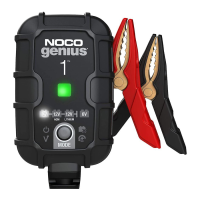
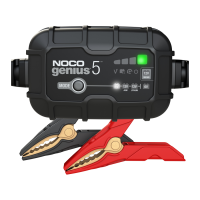
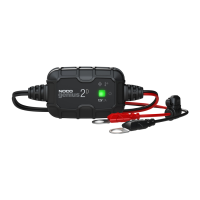
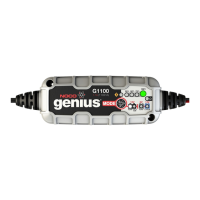
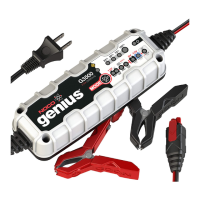
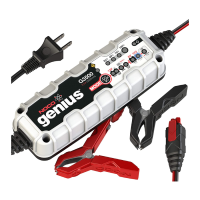
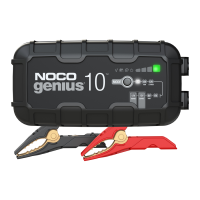
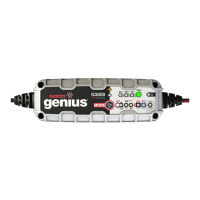
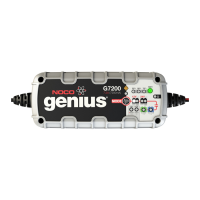
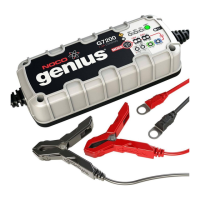
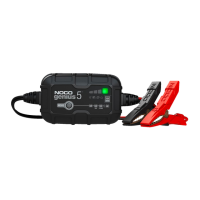
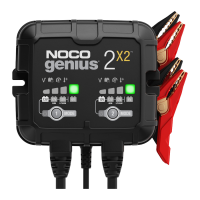
